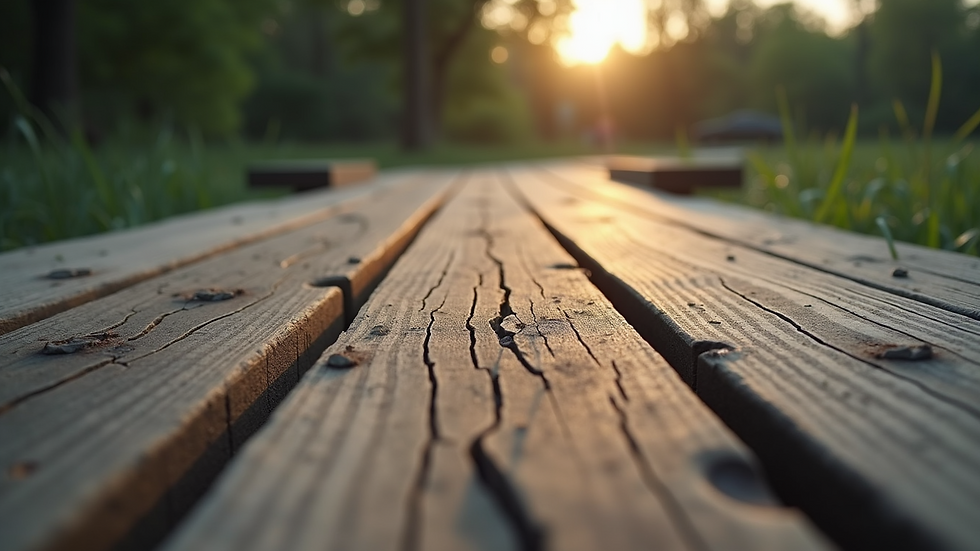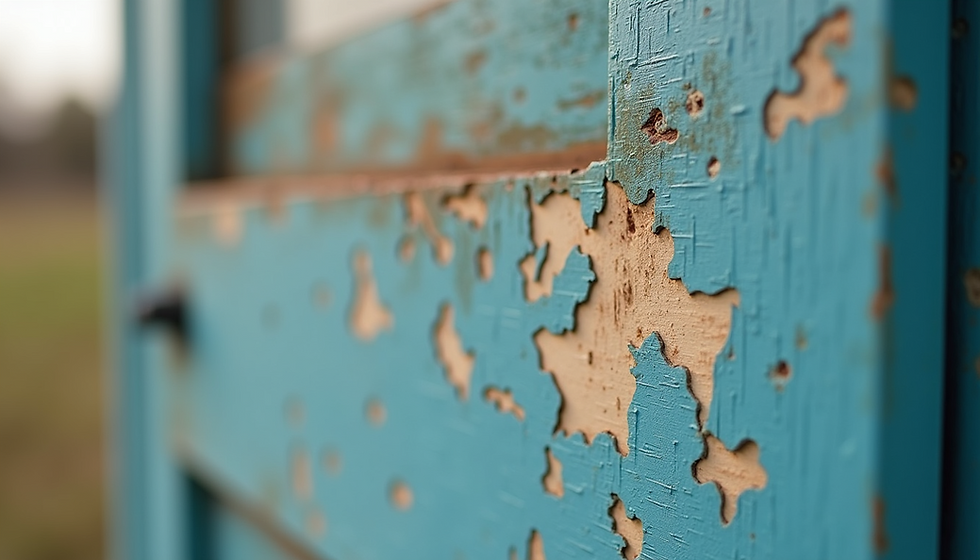Should You Paint or Replace Rotten Wood Deck Boards?
- Angel Sosa
- Aug 26
- 5 min read
Maintaining the outdoor spaces of our homes is essential, and decks play a crucial role in that. A well-kept deck not only enhances the visual appeal of your backyard but also provides a cozy spot for gatherings and can significantly boost your property's value. But what do you do when your cherished wood deck starts to show signs of rot? You face a tough decision: should you paint over the damage or replace the rotten wood deck boards entirely? In this article, we’ll help you assess the condition of your deck and find the best solution for your needs.
Understanding Wood Deck Rot
Wood rot is a natural occurrence caused by prolonged exposure to moisture, creating the perfect environment for fungi to thrive. This leads to the breakdown of wood fibers and results in structural damage. Initially, signs of rot can be hard to spot, but they can quickly worsen if not addressed promptly.
Common indicators of rot include:
Soft or Spongy Spots: If you press down and it feels mushy, it indicates decay.
Dark Discoloration: Look for darkened sections that differ from the rest of the wood.
Crumbling Wood: If the wood crumbles easily under pressure, it's likely rotten.
Cracks and Splits: Check for any cracks or splits that appear in the boards.
Recognizing these signs is essential to determining whether your deck needs a quick paint job or a complete overhaul.
Assessing Structural Integrity
Before making any decisions regarding repairs, assessing the overall health of your deck is crucial. You can follow these steps for an effective evaluation:
Visual Inspection: Walk around and look for visible signs of rot. Pay attention to the edges and joints.
Physical Test: Use a screwdriver to poke at suspected areas. If the wood feels soft, it likely needs replacement.
Check the Joists: The boards may look fine, but the joists and beams beneath might be rotting.
Feel for Bounce: Walk around your deck and notice if there is any bounce or instability. This may indicate deeper issues.
Once you've evaluated your deck, you can decide on the next steps.
When to Paint
If the rot is minor and isolated to a small section, a paint job might be a viable temporary fix. Here are examples where painting could be sufficient:
Minor Surface Damage: If the rot is confined to just a few boards, you can safely paint over it. Ensure you sand any rough patches for better adherence.
Aesthetic Update: If the deck is visually dim due to age or discoloration, a fresh coat can reinvigorate its appearance.
Short-Term Solution: Planning future renovations? Paint can serve as a short-term fix while you save for a complete replacement.
Just ensure you choose high-quality exterior paint designed for wood, as this will offer some protection against future moisture damage.
When to Replace
If your assessment shows extensive damage, it may be time to replace the rotten wood deck boards. Consider the following factors that indicate replacement is necessary:
Severe Rot: If more than 25% of a board is rotted or multiple boards are compromised, it’s best to replace them.
Support Structures Affected: Rot in joists or beams can severely compromise the stability of your deck, necessitating replacement.
Recurring Repairs: Regular repairs to the same areas signal that it’s time for an investment in new boards to avoid ongoing costs.
Safety Risks: If your deck poses safety hazards, like a risk of collapse, immediate action is essential.

Close-up view showcasing deterioration on a wood deck board
The Cost Factor
Budget often plays a crucial role in deciding whether to paint or replace rotten wood deck boards. Here are some financial considerations:
Budget for Repairs: Replacement can be significant. For example, replacing boards can cost between $2 to $5 per linear foot, depending on the material. When you add structural repairs and labor costs, the costs can climb quickly.
Cost-Effectiveness of Painting: While painting saves money now, it only prolongs the inevitable. If the underlying issues are ignored, you can spend more in the long run.
Value Addition: A well-maintained deck can significantly improve your home’s curb appeal and resale value. According to the National Association of Realtors, a quality deck can recoup roughly 70%-80% of its value during a sale.
Choosing Your Materials
If you decide to replace the rotten wood deck boards, explore your material options:
Pressure-Treated Wood: This is a common choice, resistant to rot and insects. However, you will need to perform regular maintenance to prolong its life.
Composite Decking: Made from wood fibers and recycled plastic, composite materials are durable and low-maintenance, although they come with a higher price tag.
Hardwoods: Options like mahogany or teak offer durability and elegance but often cost more upfront.
PVC Decking: This synthetic alternative is moisture and insect resistant. While it is typically pricier than wood, its longevity may justify the expense.
Choosing the right materials will not only affect your deck’s durability but also enhance the overall look of your outdoor area.
DIY vs. Professional Help
Once you decide on replacement, consider whether to tackle the project yourself or hire a professional contractor like HGB Painting. Here are the pros and cons of each approach:
DIY Approach
Pros: Save on labor costs, gain personal satisfaction, and learn new skills.
Cons: It takes time, requires tools, and mistakes could result in more expenses.
Hiring Professionals
Pros: Experts can quickly and accurately assess problems, ensuring high-quality work.
Cons: This route is typically more expensive, but it may save you money in the long run.
Choose the approach based on your comfort level with DIY tasks and your budget.
Preparing for the Project
If you opt to make the repairs yourself, preparation is essential. Follow these steps:
Gather Tools and Materials: Ensure you have everything, such as saws, hammers, nails, paint, and safety gear.
Safety First: Wear protective eyewear and gloves when working with wood and chemicals.
Clear the Area: Remove any furniture and obstacles from the deck for easy access.
Check the Weather: Plan your project during dry weather to ensure materials set properly.
Making an Informed Decision
Choosing between painting or replacing rotten wood deck boards involves careful consideration of your deck's condition. While painting is a temporary fix for minor issues, more serious rot and structural problems require a decisive solution. Investing in quality materials and hiring professionals when needed will ensure that your deck stays a beautiful and safe outdoor space for many years.
If you're unsure, consider consulting with experts like HGB Painting for personalized guidance. A well-maintained deck contributes not only to the aesthetics of your home but also protects your investment. Take the time to thoroughly assess your deck to make an informed decision on how to move forward.





Comments